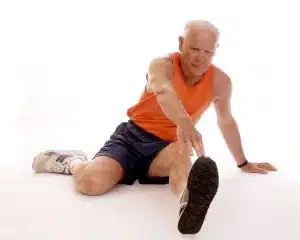Aging isn’t fun for anyone. Your memory starts to fade, your body slows down and gains weight, and your joints start to stiffen. And while no one can reverse or stop the aging process, one of the best ways to reduce the speed at which your body is changing is to be more active. “As the years go by, staying active becomes one of the key factors in staying independent, pain-free and feeling good,” Gabriel Enescu, Physical Therapist the owner of Excel Physical Therapy in Lodi. Exercise is known to help prevent and reduce such problems as heart disease, diabetes, and stroke, along with its more obvious benefits of increasing strength and reducing — or at least maintaining — weight. And, as Gabriel points out, better health from increased activity often allows patients to reduce their reliance on some medications, allowing patients to take them less frequently or sometimes quit them altogether.
If you want to exercise more but haven’t done so in a while, walking is an easy activity to begin with. It’s low-impact and has been shown to reduce the risk of heart attacks. It doesn’t require training or special equipment, just a good pair of shoes. And it’s easy to measure your progress with a pedometer, or even simply timing your walks. The goal of any walking program is to increase activity gradually, explains Gabriel. You can time how long or count how far you walked even if it was only 1 minute or 1 block. Once you can walk that length of time or distance comfortably, increase it. It is recommended increasing your distance by around 1,000 steps (which is about ½ mile) and maintaining that distance for a week or two before trying to increase the distance again. According to the American College of Sports Medicine, 10,000 steps a day is a reasonable goal for most healthy adults, and 10,000 to 12,500 steps a day is considered active. The ultimate goal is the guidelines advocated by the CDC, says Gabriel: 150 minutes a week of moderate-intensity exercise, or 75 minutes a week of vigorous-intensity exercise, or an equivalent combination of the two. If you’re planning to do this by walking, that means you’d have to walk for 30 minutes 5 days a week. If you want to change the intensity, Gabriel suggests going jogging, climbing stairs or adding hills. For more information on running equipment, stretches and common injuries visit our site here. If you’re concerned about starting a walking program on your own because of an injury or lack of strength and endurance please give us a call.
At Excel Physical Therapy, Gabriel and his staff offer an Active Senior Program that caters to anyone 60 or older who wants to maintain his independence and quality of life, enhance his quality of life by reducing or eliminating pain, and avoid decline in physical health by strengthening and treating specific muscles or joints. Tailored to each individual, the program starts with a comprehensive evaluation done by a physical therapist to assess musculoskeletal health and/or injury. This allows the team to create a personal plan of care that considers the person’s age, specific goals, and current level of fitness and/or any medical conditions. The team also makes sure that each participant can improve her strength and balance at her own pace, reducing the risk of falls and further injury. The goal is for each participant to lead a more active and healthy life. One of the biggest benefits of these structured senior programs is that the staff is trained to look for and respond to any signs of distress — if a person starts feeling dizzy, for example, the staff can help to figure out what is causing the problem. If you are on your own and start having trouble breathing, or if you experience chest pain or dizziness, says Gabriel, it’s time to take a break. If it continues, you should call your doctor to discuss how to adapt your exercise program. After your workout, you should also pay attention to how your body feels; you don’t need to exercise until you are really sore in order to see results. Gabriel recommends following the “two-hour pain rule” set by the Arthritis Foundation. Essentially, if you are more sore two hours after you finished exercising compared to before you started, then you’ve overdone it. Also, he cautions, pay close attention if the pain is in the joints. You need to back off of the activity or reduce your intensity, so that you don’t cause an injury and further pain. Call us and we will gladly answer your questions. Happy Walks!



